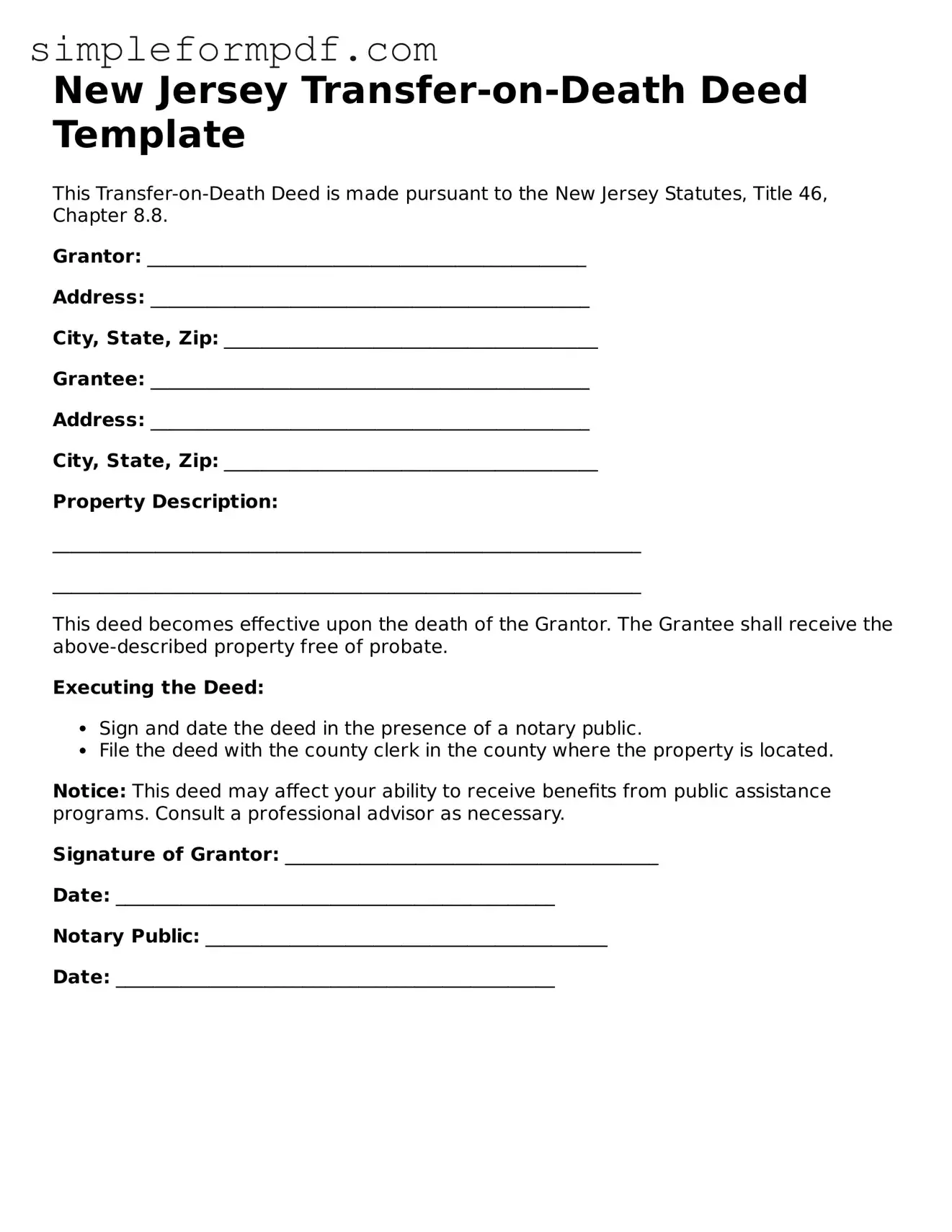New Jersey Transfer-on-Death Deed Template
This Transfer-on-Death Deed is made pursuant to the New Jersey Statutes, Title 46, Chapter 8.8.
Grantor: _______________________________________________
Address: _______________________________________________
City, State, Zip: ________________________________________
Grantee: _______________________________________________
Address: _______________________________________________
City, State, Zip: ________________________________________
Property Description:
_______________________________________________________________
_______________________________________________________________
This deed becomes effective upon the death of the Grantor. The Grantee shall receive the above-described property free of probate.
Executing the Deed:
- Sign and date the deed in the presence of a notary public.
- File the deed with the county clerk in the county where the property is located.
Notice: This deed may affect your ability to receive benefits from public assistance programs. Consult a professional advisor as necessary.
Signature of Grantor: ________________________________________
Date: _______________________________________________
Notary Public: ___________________________________________
Date: _______________________________________________
